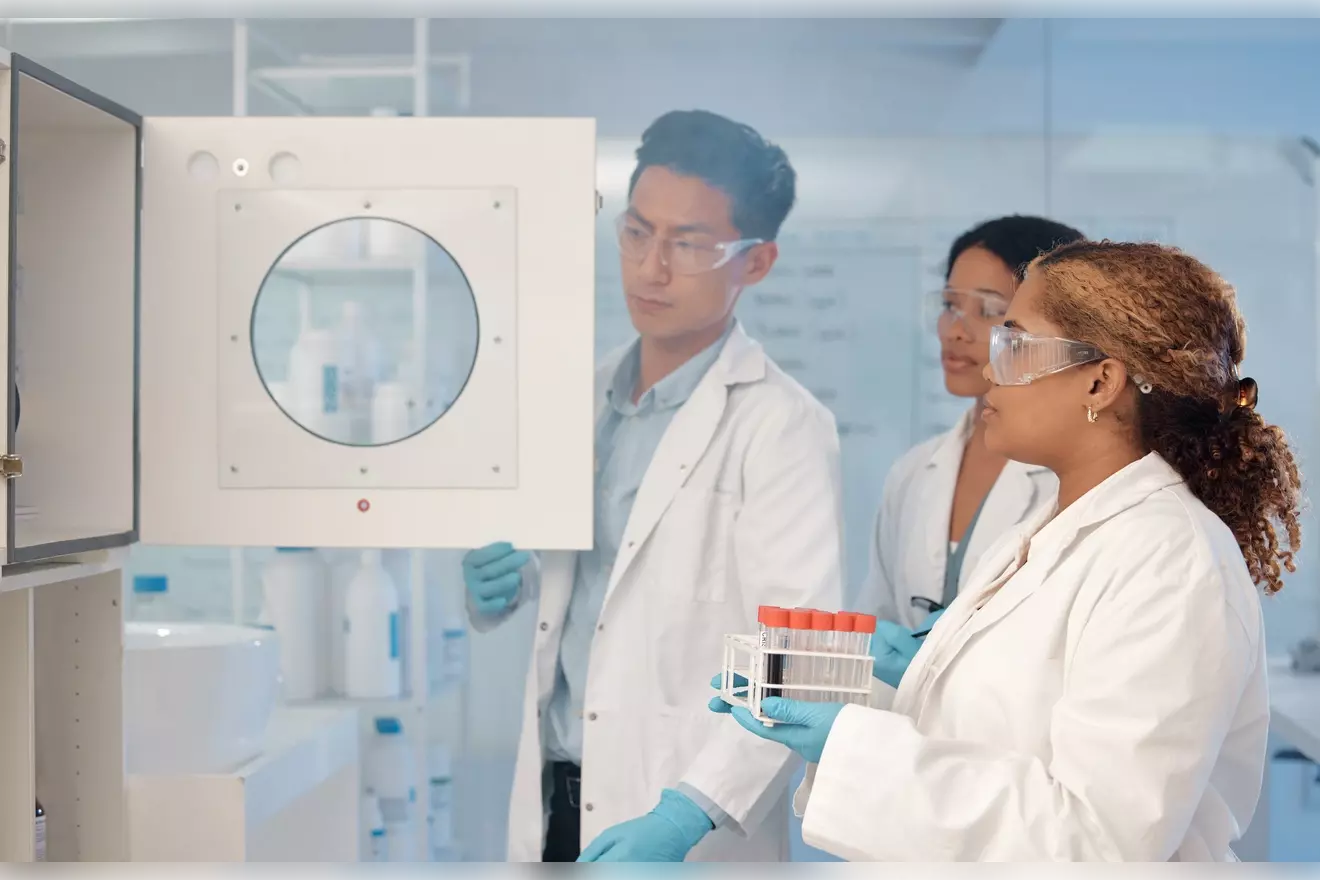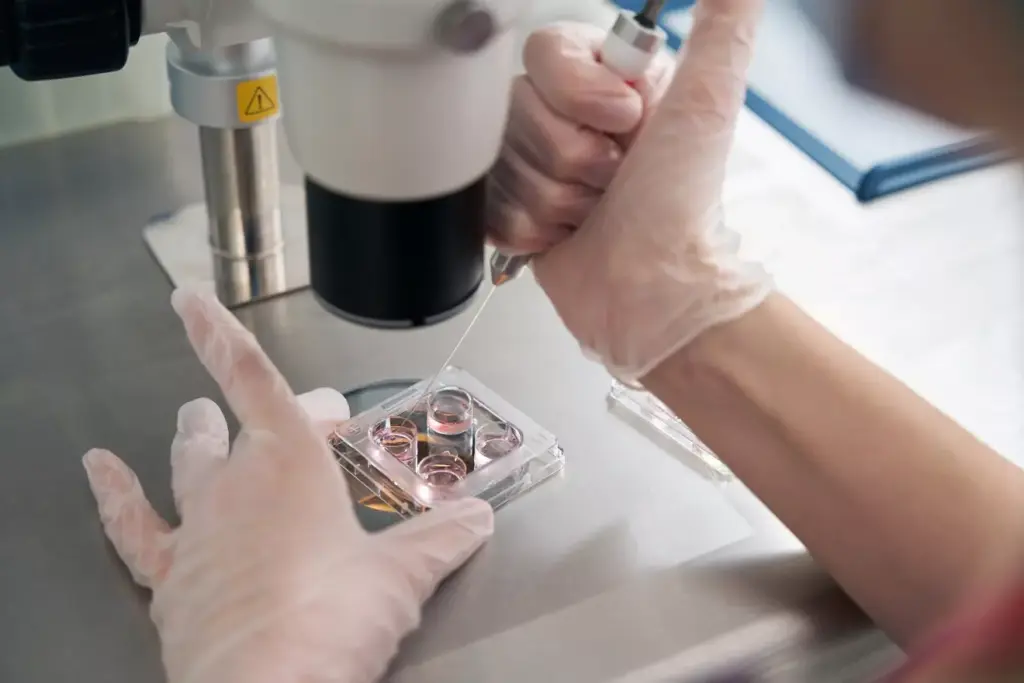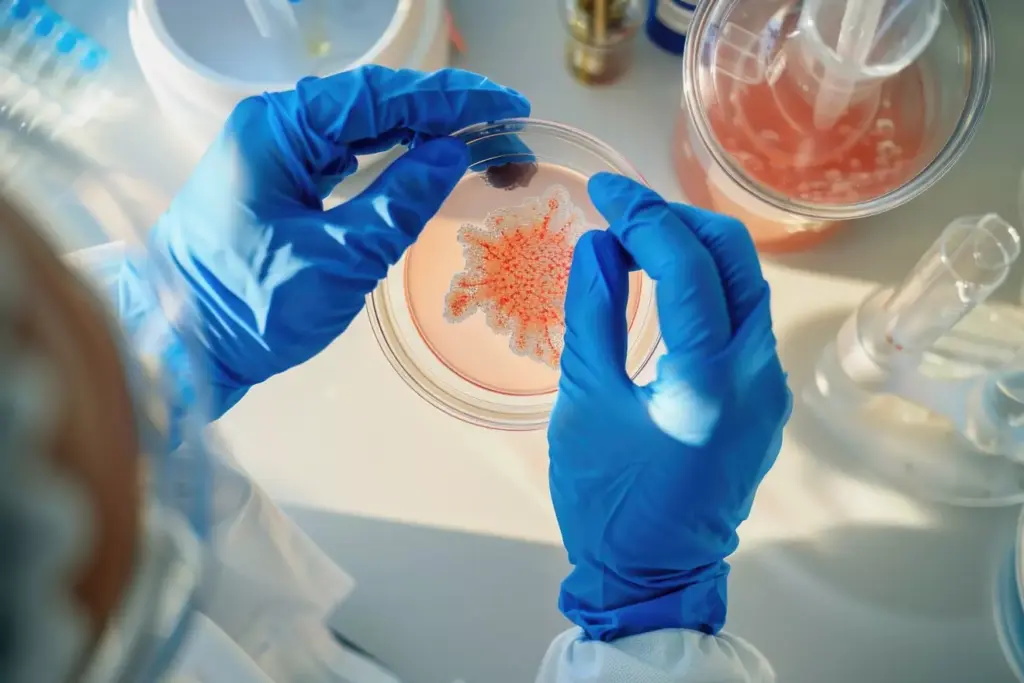Last Updated on November 26, 2025 by Bilal Hasdemir

At Liv Hospital, we aim to give top-notch healthcare with a focus on our patients. We’ve been looking into CAR T cell therapy, a new ‘living drug’ that’s changing how we treat cancer.
We’re eager to share 12 essential facts about this cutting-edge immunotherapy. You’ll learn about how it works, its FDA approvals, and the latest breakthroughs.
CAR T cell therapy changes a patient’s T cells to attack cancer cells. It brings new hope to those with certain blood cancers.
Key Takeaways
- CAR T cell therapy is a revolutionary cancer treatment.
- It involves genetically modifying a patient’s T cells.
- The therapy has shown significant promise in treating certain blood cancers.
- FDA approval has been granted for specific indications.
- Ongoing research is advancing the field of immune cell therapy.
The Science Behind CAR T Cell Therapy
CAR T Cell Therapy changes T cells to better fight cancer. It uses the body’s immune system to attack cancer. This gives hope to patients with some cancers.
Definition and Fundamental Concepts
CAR T Cell Therapy uses chimeric antigen receptor (CAR) technology. Chimeric antigen receptors let T cells find and attack cancer cells. This makes T cells better at killing cancer.
“The development of CAR T Cell Therapy is a big step forward,” say experts. The precision and potency of CAR T cells are very effective against some blood cancers.
How Chimeric Antigen Receptor Technology Works
Chimeric antigen receptor technology lets T cells find cancer cells. The process includes several steps:
- Identifying the right antigen on cancer cells
- Designing and making the CAR construct
- Genetically changing T cells to have the CAR
- Expanding and giving the modified T cells back to the patient
After being given back, the CAR T cells keep working. They target cancer cells without harming healthy ones. This reduces side effects from traditional treatments.
“CAR T Cell Therapy has changed how we treat some blood cancers. It gives patients a chance for a cure.”
Understanding CAR T Cell Therapy shows its complexity and innovation. As research grows, we’ll see even better treatments.
The Revolutionary Mechanism of Action
CAR T cell therapy is a game-changer. It reprograms T cells to attack cancer cells. This method has shown great promise in treating blood cancers like leukemia.
Genetic Engineering of T Cells
At the heart of CAR T cell therapy is genetic engineering. T cells are taken from the patient’s blood. Then, a viral vector is used to add a chimeric antigen receptor (CAR).
This CAR lets T cells find and destroy cancer cells. The process includes several steps: T cell activation, gene transfer, and cell expansion.
The genetic change makes CAR T cells better at finding cancer cells. After being put back into the patient, these cells can persist and proliferate. This gives a long-lasting fight against tumors.
Targeted Cancer Cell Recognition and Destruction
CAR T cells are made to find specific antigens on cancer cells. For example, in some leukemias, they target the CD19 antigen on B cells. When they find the antigen, they get activated and kill the cancer cells.
This targeted method helps avoid harming healthy cells. It reduces the side effects seen with traditional cancer treatments.
CAR T cells are a powerful tool against cancer, including leukemia. Researchers are working to target more antigens and make the therapy safer and more effective.
FDA Approval Milestones for CAR T Cell Therapies
The journey to FDA approval for CAR T cell therapies has seen many important milestones. These milestones show the innovation and dedication to helping patients. They highlight the efforts to bring new treatments to those in need.
Breakthrough Designations and Initial Approvals
In 2017, the FDA gave CAR T cell therapies a breakthrough designation. This recognized their promise in treating certain cancers. It also sped up their development and review.
Initial approvals were granted for specific indications. This was a big step for CAR T cell therapy. It was based on strong clinical data showing their safety and effectiveness in treating blood cancers.
Currently Approved CAR T Products and Indications
Now, several CAR T cell products have FDA approval for certain uses. Tisagenlecleucel (Kymriah) and axicabtagene ciloleucel (Yescarta) are approved for treating some blood cancers. They are for patients with relapsed or refractory large B-cell lymphoma and acute lymphoblastic leukemia (ALL).
The approval of these products has been a big step forward in treating blood cancers. Clinical trials have shown remarkable response rates in patients. This gives new hope to those with few treatment options.
As we watch the CAR T cell therapy field, it’s clear that FDA approval milestones are key. They have shaped the future of cancer treatment. The ongoing work and improvement in CAR T cell therapies promise to help more patients and improve outcomes.
CD19 and Beyond: Target Antigens in CAR T Cell Therapy
CAR T cell therapy works by finding and attacking specific cancer-related antigens. Antigens are substances on cells that can start an immune response. The chimeric antigen receptor (CAR) in CAR T cell therapy is designed to spot a certain antigen on cancer cells. This lets T cells find and kill these cells well.
CD19 as the Primary Target in B-Cell Malignancies
CD19 is a key target for CAR T cell therapy, mainly for B-cell cancers like acute lymphoblastic leukemia (ALL) and some lymphomas. CD19 is a protein on B cells from the start of their development until they mature. Its constant presence on cancerous B cells makes it a great target for CAR T cell therapy. Studies have shown that targeting CD19 can lead to complete remissions in patients with relapsed or refractory B-cell ALL and lymphoma.
The success of CD19-targeted CAR T cell therapy has led to the approval of several CAR T cell products. This is a big step forward in treating B-cell malignancies. But, some patients lose CD19 on their cancer cells, leading to relapse. This has led to research on how to prevent this and make treatment more lasting.
Emerging Antigens for Different Cancer Types
Researchers are looking at other antigens for CAR T cell therapy for different cancers. For example, BCMA (B-cell maturation antigen) is being explored for multiple myeloma, with promising results in trials. Other targets include CD22 for B-cell cancers and various antigens for solid tumors like EGFR in glioblastoma and mesothelin in mesothelioma.
Finding new target antigens is key to making CAR T cell therapy work for more cancers. Research aims to find antigens that are only on tumor cells, reducing harm to healthy cells. This is important for making CAR T cell therapy safer and more effective.
As we learn more about target antigens in CAR T cell therapy, we’re getting closer to its full promise. The future of CAR T cell therapy is in making treatments more personalized. This means tailoring treatments to each patient based on their tumor’s specific antigens. This could lead to more effective cancer treatments.
Clinical Effectiveness of CAR T Cell Therapy in Blood Cancers
CAR T cell therapy is a new and powerful treatment for some blood cancers. It’s making big strides in the fight against leukemia and lymphoma. This is thanks to the field of immuno-oncology.
Response Rates in Leukemia and Lymphoma
The results of CAR T cell therapy in leukemia and lymphoma are promising. Many patients see their cancer go into complete remission after treatment.
In a study on patients with acute lymphoblastic leukemia (ALL), over 80% achieved complete remission. For those with diffuse large B-cell lymphoma (DLBCL), the response rate was about 50-60%.
| Cancer Type | Response Rate | Complete Remission Rate |
|---|---|---|
| Acute Lymphoblastic Leukemia (ALL) | 90% | 80% |
| Diffuse Large B-Cell Lymphoma (DLBCL) | 60% | 40% |
Long-term Outcomes and Survival Data
The long-term results for CAR T cell therapy are also encouraging. Many patients who achieve complete remission stay disease-free for a long time.
A study on ALL patients showed a 70% overall survival rate at 12 months. For DLBCL patients, the progression-free survival rate at 12 months was about 40%.
These findings suggest CAR T cell therapy could greatly improve long-term outcomes for blood cancer patients. Ongoing research will help us understand how long these benefits last and if they lead to long-term survival.
The Complete CAR T Cell Treatment Process
The CAR T cell treatment process starts with patient evaluation and ends with follow-up care. It’s a detailed journey to ensure CAR T cell therapy is safe and effective.
Patient Evaluation and Cell Collection
The first step is patient evaluation. Our medical team conducts a thorough assessment to check if a patient is right for CAR T cell therapy. They look at medical history, current health, and past treatments.
After checking, the next step is cell collection. This is done through leukapheresis, where T cells are taken from the blood. “This procedure is key as it gives us the T cells to fight cancer,” says a CAR T cell therapy expert.
T Cell Engineering and Manufacturing
After collecting cells, they go to a special facility for engineering. There, T cells are made to target cancer cells. This involves gene editing and growing the CAR T cells.
The manufacturing process is tightly controlled to meet safety and effectiveness standards. “The quality of the CAR T cells is vital for therapy success,” a CAR T cell therapy expert, pointing out the need for strict quality control.
Infusion Protocol and Follow-up Care
When CAR T cells are ready, they’re infused back into the patient. This is like a blood transfusion. But, close monitoring is essential to handle side effects like cytokine release syndrome.
After infusion, patients get follow-up care. This is to check how they’re doing and manage side effects. “Follow-up care is key,” a CAR T therapy expert “as it helps patients recover well.”
Our team supports patients through every step of the CAR T cell treatment. By knowing the process, patients can better understand their journey.
Managing Side Effects of CAR T Cell Therapy
CAR T cell therapy brings hope to patients with some cancers. But, it’s important to know and handle its side effects. These can include cytokine release syndrome and neurological issues, which need quick action and good care.
Cytokine Release Syndrome: Recognition and Management
Cytokine release syndrome (CRS) is a serious side effect of CAR T cell therapy. It happens when the T cells release a lot of cytokines into the blood. Spotting CRS early is key, as it can quickly get worse.
We watch patients for signs of CRS, like fever, low blood pressure, and trouble breathing. For CRS, we use a mix of care and, when needed, anti-cytokine drugs like tocilizumab. Tocilizumab blocks IL-6 receptors and helps lessen CRS without hurting the therapy’s effect.
Neurological Toxicities and Other Adverse Events
After CAR T cell therapy, some people might have brain problems like encephalopathy, aphasia, or tremors. These can be mild or serious and need a lot of care. We also keep an eye out for other issues, like infections and low blood cell counts, which we treat with medicine.
New research in CAR T cell therapy is making things better for patients. For example, Aanastra Inc’s work shows we’re getting closer to making therapy safer and more effective.
Handling CAR T cell therapy side effects well needs a team effort. Doctors, nurses, and other experts work together. By knowing the side effects and how to manage them, we can make therapy better and help more people.
Cutting-Edge Innovations in CAR T Cell Technology
Advances in CAR T cell tech are changing cancer treatment. The field is growing fast, with new ideas to make CAR T cell therapy better and safer.
‘Plug-and-Play’ Systems and Universal CAR T Cells
One big step is the ‘plug-and-play’ systems and universal CAR T cells. These aim to make CAR T cell therapy easier and work for more people and cancers. Universal CAR T cells can work with many HLA types, which might cut down on the need for custom-made treatments.
‘Plug-and-play’ systems let you easily change or mix CAR designs to target different cancer markers. This could make making CAR T cells faster and more flexible.
CRISPR and Gene Editing Applications
CRISPR and gene editing are also big in CAR T cell research. CRISPR lets you make precise changes to the T cell’s genes, making it better at fighting cancer and reducing side effects.
Gene editing can remove genes that might hold back CAR T cells or add new abilities. For example, removing the PD-1 gene can help CAR T cells stay longer in tumors and work better.
Adding CRISPR to CAR T cell therapy is a big leap in CAR T research. It opens up new ways to improve treatments and treat more cancers.
As CAR T cell technology keeps getting better, we’ll see even more advanced treatments. The mix of ‘plug-and-play’ systems, universal CAR T cells, and gene editing is set to change cancer treatment forever.
Expanding CAR T Cell Therapy to Solid Tumors
CAR T cell therapy has been a game-changer for some blood cancers. But, using it for solid tumors is a tough challenge. We’re looking into the latest research, the hurdles, and the hopeful ways to tackle them.
Current Challenges and Limitations
Using CAR T cells on solid tumors is tricky. Solid tumors have a tough environment that makes CAR T cells less effective. The main problems are:
- Tumor heterogeneity and antigen escape
- Immunosuppressive tumor microenvironment
- Limited CAR T cell infiltration into solid tumors
To beat these hurdles, we need new ideas to make CAR T cell therapy better for solid tumors.
Promising Approaches and Clinical Trials
Scientists are working on new ways to use CAR T cells for solid tumors. Some ideas include:
- Combination Therapies: Mixing CAR T cells with other treatments to fight tumors better.
- Armored CAR T Cells: Making CAR T cells that can change the tumor environment.
- Tumor-Targeting Strategies: Finding ways to get CAR T cells to stay in solid tumors longer.
| Trial Name | Approach | Status |
|---|---|---|
| STARLIGHT-1 | CAR T cells + Checkpoint Inhibitor | Ongoing |
| SOLID-TUMOR-CAR-T | Armored CAR T Cells | Recruiting |
A CAR T cell pioneer, said, “The field is moving fast. We’re seeing great lab results that are now being tested in clinical trials for solid tumors.”
We’re committed to finding new ways to use CAR T cell therapy for solid tumors. This could help treat more types of cancer.
Conclusion: The Future of CAR T Cell Therapy
As we wrap up our look at CAR T cell therapy, it’s clear this treatment has a bright future. New research is pushing the boundaries of immune cell therapy. It’s opening up new possibilities beyond what we see today.
Advances in genetic engineering and finding new targets are key to CAR T cell therapy’s future. These steps will make the treatment more effective and available for more cancers. This could change how we fight cancer for the better.
We’re excited for the future of CAR T cell therapy. We expect better results, fewer side effects, and more uses for immune cell therapy. As this therapy grows, we’re here to offer top-notch care to patients from around the world.
FAQ
What is CAR T cell therapy?
CAR T cell therapy is a new way to fight cancer. It changes a patient’s T cells to find and kill cancer cells. It’s been very effective against some blood cancers like leukemia and lymphoma.
How does chimeric antigen receptor technology work?
Chimeric antigen receptor (CAR) technology makes T cells better at finding cancer. By adding CARs to T cells, we boost the body’s fight against cancer.
What is the mechanism of action of CAR T cell therapy?
CAR T cell therapy genetically changes T cells to target cancer. This method is more precise, helping treat certain blood cancers better.
What is the FDA’s role in approving CAR T cell therapies?
The FDA is key in approving CAR T cell therapies. They check if these treatments are safe and work well. They’ve given special approvals to some CAR T cell therapies, like those targeting CD19 in B-cell cancers.
What is CD19, and why is it a primary target in CAR T cell therapy?
CD19 is a protein on B cells’ surface. It’s a main target for CAR T cell therapy in B-cell cancers. Targeting CD19 has been very effective in treating some leukemia and lymphoma types.
What are the common side effects of CAR T cell therapy?
Side effects include cytokine release syndrome (CRS), brain problems, and other issues. CRS is serious and needs quick action.
How is cytokine release syndrome managed?
Managing CRS means watching patients closely for signs like fever and brain problems. Treatment often includes steroids and other support.
What are the latest advances in CAR T cell technology?
New advancements include ‘plug-and-play’ systems and universal CAR T cells. Also, CRISPR and other gene editing are being used. These aim to make CAR T cell therapy safer and more effective.
Can CAR T cell therapy be used to treat solid tumors?
CAR T cell therapy is promising for blood cancers but is being tested for solid tumors too. Finding the right targets and dealing with the tumor environment are big challenges.
What are the response rates for CAR T cell therapy in leukemia and lymphoma?
Results vary by disease and patient. But CAR T cell therapy has shown great success in some leukemia and lymphoma cases, with some patients getting complete remission.
What is the typical treatment process for CAR T cell therapy?
The process includes checking the patient, collecting cells, engineering T cells, infusion, and follow-up. Each step is important for safe and effective treatment.
Are there any ongoing clinical trials for CAR T cell therapy?
Yes, many trials are looking at CAR T cell therapy’s safety and effectiveness in different cancers, including solid tumors. These trials aim to make CAR T cell therapy even better for patients.
References
- National Cancer Institute. CAR T Cells in Cancer Treatment. https://www.cancer.gov/about-cancer/treatment/research/car-t-cells
- Zugasti I, Espinosa‑Aroca L, Fidyt K, et al. CAR‑T cell therapy for cancer: current challenges and future directions. Signal Transduction and Targeted Therapy. 2025;10(1):210. https://www.nature.com/articles/s41392-025-02269-w (Nature)
- Alnefaie A, et al. Chimeric Antigen Receptor T‑Cells: An Overview of Concepts, Applications, Limitations, and Proposed Solutions. PMC. https://pmc.ncbi.nlm.nih.gov/articles/PMC9256991/
- Fischer JW, Bhattarai N. CAR‑T Cell Therapy: Mechanism, Management, and Mitigation of Inflammatory Toxicities. Frontiers in Immunology. 2025. https://www.frontiersin.org/journals/immunology/articles/10.3389/fimmu.2025.1583116/full








